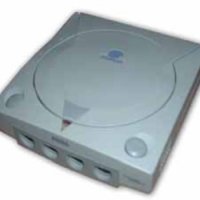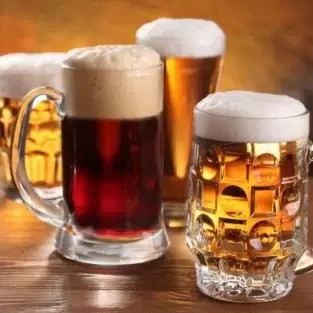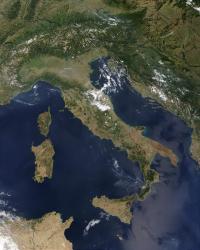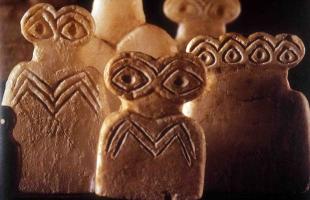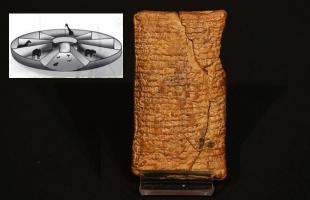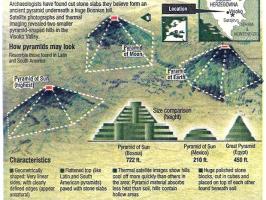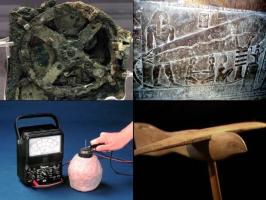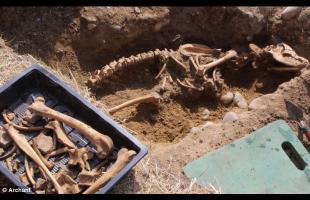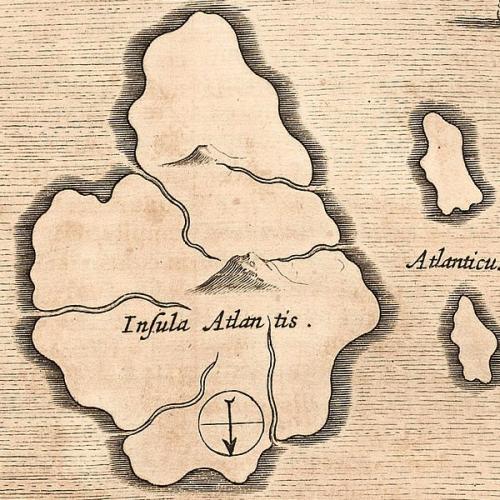Copy Link
Add to Bookmark
Report
HOMEBREW Digest #3237

HOMEBREW Digest #3237 Tue 01 February 2000
FORUM ON BEER, HOMEBREWING, AND RELATED ISSUES
Digest Janitor: janitor@hbd.org
Many thanks to the Observer & Eccentric Newspapers of
Livonia, Michigan for sponsoring the Homebrew Digest.
URL: http://www.oeonline.com
Contents:
Micorwave Bombs ("Nigel Porter")
Exploding water ("Doug Moyer")
Mash efficiency / Microwave bombs / Color evaluation (David Harsh)
Ernie's Corona mill ("Sean Richens")
Re.: Microwave bombs ("Sean Richens")
Microwave Bombs (TKBFRED)
Refractometer Calibration (Biergiek)
Superheated water, congealed keg lube (Dave Burley)
Beer Color on the Computer (Tom Wolf)
Standards ("Jack Schmidling")
John's old home brew (Joy Hansen)
Practical Brewer download ("Steven J. Owens")
Phil's educational efforts ("Steve Potter")
English to Metric Yield (Kirk.Fleming)
Wine haze (William Frazier)
Thanks for info (Bruce & Amber Carpenter)
Re:raw wheat in witbier (KMacneal)
microwave WHAT ? ("Francois Zinserling")
Water Analysis Problems, Water Recipe? (Kurt Kiewel)
Re: Trappist Light (question) ("Brian Dixon.")
Efficiency improvements (Kurt Goodwin)
Re: Microwave Bombs (VQuante)
Biere de Garde Flavour (Graham Sanders)
Efficiency standards / what is caustic? We need Siebel! (minor rant) ("George de Piro")
pH prediction (Ant Hayes)
Shipping Beer from Germany to the US (Eric Schoville)
Slaked lime (Dave Burley)
UK Homebrew (Tony Barnsley)
Re: Stuck sparge with EM (The Artist Formerly Known As Kap'n Salty)
RE: Pressure Canner Woes ("Dave Hinrichs")
PH Meter (Was: raising mash pH) (Carmen Salvatore)
* Beer is our obsession and we're late for therapy!
* Entry deadline for the Mayfare Homebrew Competition is 3/15/00
* See http://www.maltosefalcons.com/ for more information
Send articles for __publication_only__ to post@hbd.org
If your e-mail account is being deleted, please unsubscribe first!!
To SUBSCRIBE or UNSUBSCRIBE send an e-mail message with the word
"subscribe" or "unsubscribe" to request@hbd.org FROM THE E-MAIL
ACCOUNT YOU WISH TO HAVE SUBSCRIBED OR UNSUBSCRIBED!!!**
IF YOU HAVE SPAM-PROOFED your e-mail address, you cannot subscribe to
the digest as we canoot reach you. We will not correct your address
for the automation - that's your job.
The HBD is a copyrighted document. The compilation is copyright
HBD.ORG. Individual postings are copyright by their authors. ASK
before reproducing and you'll rarely have trouble. Digest content
cannot be reproduced by any means for sale or profit.
More information is available by sending the word "info" to
req@hbd.org.
JANITORS on duty: Pat Babcock and Karl Lutzen (janitor@hbd.org)
----------------------------------------------------------------------
Date: Sat, 29 Jan 2000 11:27:20 -0000
From: "Nigel Porter" <nigel@sparger.freeserve.co.uk>
Subject: Micorwave Bombs
Jack Schmidling asked about boiling water microwave bombs.
What is described is something that at work we call erruptive boiling -
I am an engineer for a company that manufactures commercial
microwave ovens.
It is possible for this to happen when heating any liquids in the
microwave. AFAIK it is caused by areas forming in the liquid that
have absorbed different amounts of energy (and therefore are at
different temperatures). This can be caused by poor distribution of
microwaves within the cavity. When a spoon is placed in the liquid it
can erupt out of the bowl.
To get over this problem the liquid should be stirred prior to being
placed in the microwave. It should then be removed form the
microwave and stirred again during cooking, prior to boiling point
being reached, and then replaced in the cavity to finish heating. This
method helps distribute heat, and avoids pockets of boiling liquid
developing.
Nigel Porter
Guildford, UK
------------------------------
Date: Sat, 29 Jan 2000 10:09:33 -0500
From: "Doug Moyer" <shyzaboy@yahoo.com>
Subject: Exploding water
Brewers,
Jack asks about the email making the rounds warning people about the
risks of boiling water in the microwave. For a fairly extensive treatise on
the matter, please see:
http://urbanlegends.about.com/library/weekly/aa011900a.htm .
In review, it is a matter of nucleation points. (As brewers, we
understand the potential of supersaturation if nucleation points are not
present.) If the glassware does not have ANY nucleation points, the water
can become superheated. After the microwave dings, adding a nucleation site
of any type (a spoon) can cause the heat to be released dramatically.
So, theoretically, it is possible. But--IT IS EXTREMELY UNLIKELY.
According to the link above, there are NO recorded instances of anyone being
injured by this phenomena. If you are still worried, let the heated water
sit for a bit to cool off. You're not going to drink boiling water anyway,
are you?
Like everything on the internet that documents horror stories and asks
you to send the message to everyone you know, it should be instantly
suspect. Even the ones with a grain of truth, like this one, are best
ignored. Too much b.s. traffic on the net anyway.
Brew on!
Doug Moyer
Salem, VA
Star City Brewers Guild: http://hbd.org/starcity
------------------------------
Date: Sat, 29 Jan 2000 10:29:00 -0500
From: David Harsh <dharsh@fuse.net>
Subject: Mash efficiency / Microwave bombs / Color evaluation
Greetings-
John Palmer published grain yields from common fermentables with methods
for converting into overall yield or gravity. Several years ago, Martin
Manning did the same thing in an Excel spreadsheet for recipe formulation.
Just enter your grain bill in weight percents, initial gravity goals and
brewhouse efficiency, and the weights of all grains were calculated.
You could also calculate hop additions based on target IBU and had a
color calculator also (a little suspect, though). I can forward a
copy if anyone is interested. Use is simple and intuitive, which means
that I figured it out right away.
The best thing about Martin's spreadsheet is that it is in PERCENTS, not
pounds.
- --------
I suppose the "water bombs" described by js could be real if the water
is superheated in the microwave. Then, when the container is removed, the
currents and eddies provide nucleation sites and it suddenly boils. I
thought things had to be motionless for a long time to get rid of these
eddies from filling, though. If your microwave has a turntable, that's
probably enough motion to prevent from happening. Now that they've
solved
Guiness bubble dilemna, maybe someone with a license for FLUENT can
waste their time solving this one.
BTW, don't sell the history of momilies short, Jack. I'm sure they're
in the Old Testament somewhere.
- -----------------
Recent discussion of displaying colors and evaluating same reminded me
of an old beef of mine. On several occasions, I've been judging and a
fellow judge has whipped out the plastic "color guides" to evaluate actual
color. Then, by careful analysis, they announce "the style guideline
says 7-14 L, this is 15 L" and insist on reducing score accordingly. I've
always felt that if its only 1 L too dark and they need the guides to
tell,
its a little silly. Even more so, with the knowledge of how perceived color
is affected by path length. Sorry, just a rant.
Dave
Bloatarian Brewing League Cincinnati, Ohio
Cincinnatians don't need Y2K to panic, just predict 2-4" of snow.
------------------------------
Date: Sat, 29 Jan 2000 10:07:54 -0600
From: "Sean Richens" <srichens@sprint.ca>
Subject: Ernie's Corona mill
Well, Ernie, I figure you now know 11 times more about Corona mills than
the rest of us. Do you have any insights to share based on the responses
you received?
Sean
------------------------------
Date: Sat, 29 Jan 2000 10:20:00 -0600
From: "Sean Richens" <srichens@sprint.ca>
Subject: Re.: Microwave bombs
That might be an extreme case, but yes, it happens. It's called
"superheating". In a smooth container like glass you can heat water to
over 100 *C because there's not enough evaporation to take away the heat as
long as boiling doesn't occur. As soon as you create some unevenness of
conditions by disturbing the liquid a bubble can "nucleate" and all of the
water in the container experiences a sudden urge to be steam and makes a
mad race for the nearest exit.
I have two lab experiences along that line. I once made the mistake of
adding activated carbon to boiling water. This nucleated boiling
throughout the beaker and the water/steam/carbon mess shot up and left a
black stain on the ceiling, never mind the bench, the floor, etc. The
second experience is less dramatic, but in one lab we used so much caustic
that it passivated all of our glassware (and pitted it, paradoxically) and
we couldn't get anything to boil. It would just sit on the hot plate and
evaporate.
Because of this, when boiling stuff in glass in a lab one usually adds
something for the bubbles to form on. Little rocks are the best, with
glass beads or a glass rod as second choices when purity counts. The
"boil-over preventers" you sometimes see in kitchen stores (little glass or
ceramic disks) work the same way. They don't seem to help much with wort
in my kettle, but might in yours.
If your microwave can tolerate a metal spoon (many can up to a certain
size) it's a good idea to leave one in the container while heating. Maybe
someone who knows more about microwave ovens can add some more practical
advice.
Sean
------------------------------
Date: Sat, 29 Jan 2000 11:47:08 EST
From: TKBFRED@aol.com
Subject: Microwave Bombs
Jack Schmidling" <arf@mc.net> wrote:
Subject: Micorwave Bombs
>If water is heated in this manner, something should
> be placed in the cup to diffuse the energy such as a wooden stir stick,
> tea bag, etc.
Jack, be very careful, lot's of the tea bags are closed with a metal
clip. This can cause an explosion too, and you and your son
are in the Hospital side by side.
Fred
------------------------------
Date: Sat, 29 Jan 2000 13:15:31 EST
From: Biergiek@aol.com
Subject: Refractometer Calibration
>From: William Frazier <billfrazier@worldnet.att.net>
>Subject: OG Sample Chiller
>>Biergiek wrote "This baby (wort chiller) is going to send the refractometer
>>to the museum".
>Hey Biergiek - I brew in a museum called the Briarpatch. You still can't
>beat a 10 second SG reading with a refractometer.
>Bill Frazier
>Olathe, Kansas
Hey Bill, right you are, bro! I was just poking a little fun at that wacky
man Schmidling. If I made $300/hr. like some DB geek I know who lives in
Southern FL I would own a refractometer too. One thing though, with my
method you never had to worry about calibration.
I am still waiting for SteveA to weigh in on the issue of what is the correct
temperature to adjust pH too....
Kyle
Bakersfield, CA
------------------------------
Date: Sat, 29 Jan 2000 13:22:32 -0500
From: Dave Burley <Dave_Burley@compuserve.com>
Subject: Superheated water, congealed keg lube
Brewsters:
JS' description of a microwave bomb was
due to a non-equilibrium state of water
known as "superheated" in which the
water in the container is hotter than boiling
at the given atmospheric pressure.
This is often a problem because the
cup was washed in a dishwasher and
was very clean. Adding a wooden
stick ( not a metal spoon) to the cup
would provide nucleation sites to
allow this water to come to equilibrium
slowly and not suddenly with the
sudden generation of steam at
all levels in the liquid simultaneously
( it is, in fact, self-catalytic) and the
horrible results steam and boiling
water can have on human skin.
Boiling chips fulfill the same service
in chemistry where glassware is often
very clean and superheating is a well
known phenomenon.
When microwaves first came out, I
was told by the instructor ( yes, I
went to a class) that the reason eggs
blew up in the microwave was
because the yolk needed poking
first to avoid steam buildup. After
cleaning up exploded eggs I had
"polked" and saw exploded white as well,
I decided she didn't have the answer.
If you put a little oil or butter on the plate,
the egg has less tendency to stick and
a reduced penchant to explode from
steam trapped under the congealing
albumin. I still cover the dish with
plastic wrap, just in case...
- ----------------------------
Lance asks about how to remove the
congealed Keg-Lube from his connections
and such.
I have to wonder what was in the "keg lube"
you used, as I don't recall ever having this
problem. Sounds like your lube contained
an oil which was "curing" like a vegetable
oil used in oil paints and to cook with ( corn).
Even petroleum oils often need treating
with sulfuric acid to remove this source of
unsaturation to prevent this in special
oils used to lubricate watches and clocks.
Oxidation of the oil causes the oil to
polymerize to a wax or resin, especially
in the presence of metallic catalysts.
If deodorized paint thinner won't do it,
and if we assume it is a vegetable oil,
I would try using a solution of lye ( be
VERY careful - glasses and gloves)
to saponify the wax into a water soluble
soap. You can buy this at your hardware
or grocery store. Check the drain cleaner
section. You may have to acid condition
any SS you end up treating. Check the
archives for recommendations. Rubber
or plastic probably won't be harmed,
but I would give them an acid rinse
anyway. If it is petroleum based,
likely lye will not work.
Don't use "Goo Gone" as the orange
smell will lilkely penetrate the rubber
and never leave, except to odorize
your beer.
Another difference may be that I
always clean the rings and stuff
in hot soapy water each time I
keg. Just as a matter of sanitation.
I have never put keg lube on my
connectors that I can recall.
Maybe you should try doing it
this way.
On this subject, has anyone ever used
Crisco as a lube? It probably won't
cause rubber to swell as it is vegetable
in origin and is probably fully saturated
due to the hydrogenation. If you have,
what were the results?
- ---------------------------
Keep on Brewin'
Dave Burley
------------------------------
Date: Sat, 29 Jan 2000 11:17:16 -0700
From: Tom Wolf <wolfhrt@ibm.net>
Subject: Beer Color on the Computer
The recent posts on displaying color on the computer got me thinking. Im
an engineer/brewer and make my recipes on a spread sheet that is kind of
a living brewing program. I continually change sections to match the
mashing scheme or just to play games but it is consistant enough to
document my brews and start with an old recipe to make a new one. The
thinking thing is dangerous, I have more bad ideas in a minute than you
can believe. Anyway, I decided to add color patches to the spread sheet.
The spread sheet already crudely calculates Lovibond color based on the
fermentables and liquid. I started by dropping AJ Delange's formulas in
a spread sheet but got bored when I saw that it would take serious
research and some programming to get from the R/G/B numbers to actually
changing cell colors. I think it can be done though. I used Xcel's
conditional formatting feature to color cells based on my Lovibond
estimate. Now my spreadsheet has a strip of cells corresponding to the
cells in Dennis Davison's Home Brew Color Guide as best as I could
estimate a match by eye limited by Microsoft's crude formatting tools.
Now one or sometimes two cells on the strip light up showing color. The
result is crude but like the degrees L estimate is a usefull indicator
in recipe formulation.
I now have a new idea. Bring sample glasses of my beers up to the
computer nightly to refine the color match.
If anyone is interested drop me e-mail and I will send you an Xcel sheet
with the color strips in it.
Tom Wolf - Enjoying the good brewing wether in LA
wolf1@ibm.net
------------------------------
Date: Sat, 29 Jan 2000 13:25:22 -0600
From: "Jack Schmidling" <arf@mc.net>
Subject: Standards
Volker says: einer eMail vom 28.01.00 06:07:50 (MEZ) Mitteleuropaeische Zeit
schreibt
"Jack Schmidling" <arf@mc.net>:
> > The proof of the pudding is in the eating and
>> in this case gravity per pound per gallon says it all.
>Hm, but now I have the problem to compare that to the metric
system which is used in the rest of the world:
>degrees Plato per kilogram per liter...
>How can we call your propositions a standard???
The standard is the procedure not the measurement units.
Living in "the rest of the world" is a self inflicted wound.
You will just have to convert to the real units.
js
PHOTO OF THE WEEK http://user.mc.net/arf/weekly.htm
HOME: Beer, Cheese, Astronomy, Videos http://user.mc.net/arf
------------------------------
Date: Sat, 29 Jan 2000 21:18:57 GMT
From: happyhansen@scronline.com (<happyhansen@scronline.com>)
Received: from cust64.scronline.com ([207.212.244.132])
by scronline.com (wcSMTP [447])
with SMTP id 179257769; Sat, 29 Jan 2000 21:18:53 GMT
X-Sender: joy.hansen@bbs.scronline.com
Message-Id: <v01540b01b4b898d65f9c@[207.212.244.166]>
Mime-Version: 1.0
Content-Type: text/plain; charset="us-ascii"
To: homebrew@hbd.org
From: happyhansen@scronline.com (Joy Hansen)
Subject: John's old home brew
Hi John,
Finding myself in a similar situation about 20 years ago, I had possession
of a brew that had found it's way into storage in my garage along with
other prized possessions moved to the new residence. Over the several years
in storage, the temperature varied from below freezing to well over 110
degrees. Questioning the safety of the concoction, I just happened to be
taking a microbiology class at a local university, I tested it for the
usual type of spoilage organisms. Result - nothing! Couldn't find a
single thing wrong with the crystal clear brew that wasn't related to
oxidation. A sherry lovers dream?
A few weeks ago, my other half kicked me out of the back porch where I
stored my prizes at a temperature of 65 - 85 degrees. One brew was 7 years
young. All brews were oxidized!!! Except the imperial stout, that is. It
was just fine. Everything I ever wanted in a stout was there. Seems like
the Classic Beer styles commentary about stouts is correct. Pretty well
buffered against oxidation!
I sampled most every bottle of the 4 cases I dumped to give up the storage
space. Beer coolers are under the carport awaiting a new home. Now I find
myself in the induction stages of the Atkins' diet. Will home brewing ever
be the same?
Joy"T"Brew
------------------------------
Date: Sat, 29 Jan 2000 15:38:28 -0800 (PST)
From: "Steven J. Owens" <puff@netcom.com>
Subject: Practical Brewer download
Darren Robey <drobey@awb.com.au> writes:
> As is happens yesterday I had another try after very slow downloads of the
> first few chapters. I then tried again yesterday lunch time (Australian
> time) at work on an unknown internet link and was pulling 17 to
> 18kbytes/sec. I had the whole thing down in an hour. WOW it was quick.
> never seen anything like it.
The web is tricky that way; one likely explanation that occurs to
me is that your work access may have a proxy server and somebody else
behind that proxy server may have already downloaded the Practical
Brewer pages. Particularly since you're in Australia, where bandwidth
to the outside 'net is tight.
Sometimes I wish I was running my own proxy server :-).
Steven J. Owens
puff@netcom.com
------------------------------
Date: Sat, 29 Jan 2000 22:13:56 CST
From: "Steve Potter" <potter_s_l@hotmail.com>
Subject: Phil's educational efforts
Dear Collective,
Several days ago Phil Sides posted that he was going to take some Internet
classes from Milwaukee Area Technical College. I e-mailed him to
congratulate him on his good sense. I have taken several of the brewing
classes offered by MATC - some live, some over the internet. The internet
classes I took were the pilot versions of the classes being offered now.
Phil asked that I post the e-mail to the HBD, so I am obliging him.
>Phil,
>I think you will be pleased with the classes. I was involved
>in piloting these courses. I found that when you know there is a >test to
>be taken at end of the class, I concentrate much more. I >don't know how
>many times I have read water chemistry stuff in >homebrew books and my eyes
>have always glazed over. After doing the >water class, I am confident that
>I finally understand the basics.
>When you take the classes, make use of the chat room. I don't
>know which industry experts (other than herself) Laurel has lined up >to
>assist this time around, but I found it very useful. Laurel, in >addition
>to being a great teacher, is also a fine human being. Get >to know her
>during the classes and she will always be willing to >answer questions via
>e-mail even after the classes have ended.
>Cheers,
>Steve
On re-reading the e-mail I would add two things. First, It is my belief
that classes at MATC are the best value on the market. Second, I also think
that getting Laurel's e-mail address is worth the cost of taking the class.
How often do you get the ear of someone who teaches chemistry, is a Seibels
graduate, and brewed with one of the majors for over 20 years.
Now that Phil is taking the classes, perhaps he can sing the praises of the
classes in three part harmony with Wayne and me. With Seibel closed, it
becomes ever more important to support brewing education.
Steve
P.S. Wayne tells me that Laurel may be offering a brewery design class in
the spring. Care to sing lead Wayne?
______________________________________________________
Get Your Private, Free Email at http://www.hotmail.com
------------------------------
Date: Sat, 29 Jan 2000 22:12:05 -0600
From: Kirk.Fleming@born.com
Subject: English to Metric Yield
point-gallons per pound to point-Litres per Kilogram would be, roughly:
(pt*gal/lb) * 2.2lb/Kg * 4L/gal = 8.8 pt*L/Kg
So if a pound of grain yields a gallon of wort at 1.036, or 36
point-gallons, then metrically speaking, the same yield is 36 * 8.8 = 317
point-Litres per Kilogram. That is, a Kg of the same grain yields one Litre
at 1.317.
Now, someone will want the real conversion factor for Litres to gallons so
that the real formula can be expressed to 6 decimal places, but this is a
start, I think.
Kirk Fleming
FRSE, FRSL, MSRP
------------------------------
Date: Sun, 30 Jan 2000 06:06:51 +0000
From: William Frazier <billfrazier@worldnet.att.net>
Subject: Wine haze
Help- A winemaking buddy of mine in the KC area is having a problem with
this years Chardonnel grape wine. The wine has a haze. He has used
bentonite and Sparkolloid. He's filtered thru a 0.5 micron filter. Yet the
haze persists. I suggested gelatin and cold conditioning (it's been too
warm until the last couple of weeks here for natural cold conditioning). He
will try a few gallons in the frig. He does this as a hobby yet he has over
a 1000 vines and has been making wine for decades. His Chardonnel white
wine is some of the best I've tasted so I thought I would post this here, as
well as on the HVD, to see if any ideas were out there. TIA.
Bill Frazier
Olathe, Kansas
------------------------------
Date: Sun, 30 Jan 2000 06:02:51 -0600
From: Bruce & Amber Carpenter <alaconn@arkansas.net>
Subject: Thanks for info
Greetings,
I occasionaly ask for help from this forum and without fail have found this
group to be very generous with its advise, tips and suggestions. Thank you
all for your recent replies to my Zapap lauter tun questions. Specifically:
Bob Carbone
Jeff Renner
Michael Marshburn
Matthew Comstock
Fred Wills
(and others I left out)
Living in the woods of S. Arkansas and 100+ miles from the nearest homebrew
shop, this is my only real connection to the brewing world. Thanks again!
Bruce Carpenter
------------------------------
Date: Sun, 30 Jan 2000 11:05:50 EST
From: KMacneal@aol.com
Subject: Re:raw wheat in witbier
In a message dated 1/28/2000 12:16:52 AM Eastern Standard Time, "mike
o,neill" <mikeo2624@uswest.net> writes:
<< I am planning my first attempt at witbier and I
have gotten some conflicting information regarding the best
form of wheat to use. Martin Lodahl in a artical says to
use raw winter wheat Briess says to use flaked and others
say just to use malted wheat but I have read that this ends
up more like an American wheat beer. I am planning on doing
a triple decoction mash so the wheat protein should not be a
problem, I hope. Thank you Mike O'Neill(the dead horse
brewery)
>>
Rajotte recommends using flour in witbier (Belgian Beers in Classic Beer
Styles series). I recall seeing flour recommended in a recipe attributed to
Pierre Celis posted on the HBD several years ago. Based on these
recommendations I have used whole wheat flour from the grocery story in
several batches of wit with very good results.
Keith MacNeal
Worcester, MA
------------------------------
Date: Sun, 30 Jan 2000 19:11:33 +0200
From: "Francois Zinserling" <francois@designtech.co.za>
Subject: microwave WHAT ?
On Date: Thu, 27 Jan 2000, Jack Schmidling wrote about : Subject: Micorwave
Bombs.
Jack, you have been the target of another "internet scare" letter, similar
to letters going around slandering important/wealthy businesses. It is also
similar to a chain letter, intended to sew misinformation.
The idea of microwaves "building up" in a cup of water is about as far
fetched as shining a flashlight into a beer can for 2 minutes, then removing
the flashlight, and if you look into the can quick enough, you will be
blinded for life, because of all the light that accumulated in the can ...
heh heh.
Thus you can safely boil your next cup of water in the microwave. I would
still be cautious as to allow young children to operate it though.
Happy Brewing & Boiling
Francois Zinserling
Professional Engineer (Electronics)
South Africa
------------------------------
Date: Sun, 30 Jan 2000 12:22:05 -0600
From: Kurt Kiewel <kiewel@mail.chem.tamu.edu>
Subject: Water Analysis Problems, Water Recipe?
HBDers,
I have just completed my first all grain batch and have been thinking a lot
about water chemistry. I've searched the archives but could not find
anyone with water similar to mine. I'd like to give you water gurus out
there my water supply analysis, my thoughts on it and my proposed course of
action. I am hoping for comments on my logic and that you could point out
any flaws in my plan. I want to create a water profile that will be
conducive to brewing pale ales and lagers at least to the point that I can
feel comfortable that my water won't be the source of problems.
Water analysis of College Station, TX
Calcium 3ppm
Chloride 54ppm
Sodium 211ppm
Total Hardness 10ppm
Total Alkalinity 389ppm
Bicarbonate 450ppm
Carbonate 12ppm
Sulfate 8ppm
Dissolved Solids 511
pH 8.4
My analysis of the problem:
I think the only problems with my water are the high Na and bicarb levels.
I believe the bicarb cannot be removed by boiling and subsequently
precipitating as calcium carbonate because there is no calcium in the water
to begin with. Adding calcium to the water in the form of gypsum (CaSO4)
or calcium chloride and then boiling to remove calcium carbonate is
problematic because that would raise the sulfate or chloride levels to
unacceptable levels.
Filtering is an option but there is so much stuff in the water that I'd go
through filters so fast that the filtering setup might not ever pay for
itself. Any thoughts on this?
Without filtering I could dilute my water by half with bottled water to get
an appropriate Na level then add 160-170ppm of calcium to remove 425ppm of
carbonate-bicarbonate assuming approx. 40-50ppm calcium remains
unprecipitated after boiling. My best guess for 20L would be to add 4g of
CaCl2 and 6g of CaSO4. By my calculations this would give the following
analysis after boiling and decanting which is still problematic because the
Na and Cl are out of balance and the SO4 is high.
Na 105ppm
Cl 181ppm
SO4 219ppm
Ca 45ppm
CO3 35ppm
It seems that the more time I spend trying to fix my water the more
complicated it gets. So, if I use all bottled water, that stuff you get
for a quarter per gallon from the machine outside the grocery store
(Carbon filtered, RO, ozonized, etc.) and just add some gypsum, CaCl2,
NaCl, and some baking soda that would eliminate the boiling and save a
bunch of time.
Does anyone have a 'water recipe' for water that has enough stuff in it to
make good pale beers? example add 2g of this and 1.5g of that to make 22L
of water with the analysis of... Please no tsp. measurements as they could
hardly be expected to be accurate. Also could any one propose a plan to
fix my tap water?
Thanks in advance,
Kurt Kiewel, Brewing in Texas
------------------------------
Date: Sun, 30 Jan 2000 12:25:55 -0800
From: "Brian Dixon." <briandixon@home.com>
Subject: Re: Trappist Light (question)
> I recently brewed a "Trappist Light". I was interested in the Trappist
ale
> flavor, but wanted to make it lighter in alcohol than many (and another I
> just bottled @ 8.9 % ABW!). I was surprised that the resultant brew
tasted
> much like a Hefe....and wonder if this is common?
>
> Here is the recipe:
[snip]
> 3/4 ox Willamette @ start
> 1/4 oz Willamette @ 30
> 1/4 oz Willammette @ 15
>
> chilled and pitched a vile of WhiteLabs WLP500 Trappist Ale Yeast
Good, although I always recommend a starter. Belgian ales can get away with
a smaller starter, say 2 cups rather than a quart or more, because that will
favor the development of the necessary esters in your ale.
>
> kept the temp below 65F
>
> Anybody know why this tastes like a "half-a-hefe"?
First, you need to ferment at higher temperatures in order to develop the
esters that you find in Trappist ales ... like higher than 70 F (75 F would
be best.) Secondly, try using British or Continental low- to medium-alpha
hops rather than Willamette. ('American' tasting/smelling hops such as
Chinook, Willamette, and Cascade should be avoided in Belgian beers.)
Brian
------------------------------
Date: Sun, 30 Jan 2000 21:28:35 -0500
From: kurt@greennet.net (Kurt Goodwin)
Subject: Efficiency improvements
All the talk lately about calculating efficiency has led me back to
something that used to bug me. My system only yields about 60-62%
efficiency. While it's not that hard to adjust recipes to deal with
this, it occasionally irritates me that I can't get better. Following
is a brief description of my set-up and procedure, any suggestions to
improve would be most welcome.
I have a 3 tier system made from 3 31 gallon Sanke kegs. Batches are
generally 10-11 gallons into the fermenters. The mash tun has a
perforated stainless steel sheet metal false bottom with a pickup tube
(1/2 " copper) goinf from under the false bottom to an ball valve. I
generally sparge with a loop of copper tubing over the tun with many
small drilled holes making a light drizzle over the grain bed. I run
sparge water until there's 1/2 - 1" of water standing over thr grain bed
so as not to disturb it, I recirc 1-2 gallons of runoff before running
into the kettle. I hold the sparge water at roughly 170F. I stop
collecting when the gravity falls below 1.008-1.010. Thought it mighht
be poor crush at my neighborhood brew store so I bought some pre-crushed
malt from the factory - didn't make a big difference.
Makes good beer - no real complaints, just feel like I could do better.
Any thoughts?
Kurt Goodwin
kurt@greennet.net
------------------------------
Date: Sun, 30 Jan 2000 23:41:28 EST
From: VQuante@aol.com
Subject: Re: Microwave Bombs
In einer eMail vom 29.01.00 06:07:45 (MEZ) Mitteleuropaeische Zeit schreibt
"Jack Schmidling" <arf@mc.net>:
> As he looked into the cup he noted that the water was
> not boiling but instantly the water in the cup "blew up"
> into his face.
> Comments please....
It's a common phenomenon. In German language we call it "Siedeverzug", which
means "boil delay". If the cup or glass is very clean and does not have any
micro-scratches, where steam can form little bubbles, and if the water is
also very clean, it can happen, that the water superheats. And if you're
later stirring or rousing the superheated water, the heat causes an explosive
production of steam. It also can happen on the stove if you're using very new
and clean glasses and heating the water very carefully and slowly.
But usually, when you're heating the water on the stove, there is enough
trouble and movement around to prevent this.
So: Not an urban legend...
Volker
Volker R. Quante
Brunnenbraeu Homebrewery
Brewing and working in Warsaw / Poland, but definitely a German Homebrewer
------------------------------
Date: Mon, 31 Jan 2000 15:57:57 +1000
From: Graham Sanders <GrahamS@bsa.qld.gov.au>
Subject: Biere de Garde Flavour
I hope this hasn't been covered in the past (and if so my apologies)
I want to brew a Biere de Garde but am having problems with some aspects of
this style.
I have no problems with the specifications and ingredients to use, that
information is readily available. Its more to do with technique and that
troublesome flavour question.
I have two questions on technique. The first is the type of mash. I was
under the impression that the majority of mashes are done as a straight
simple infusion. Recently I have been seeing information that decotion
mashes are used. Does anyone know which it is? I'm looking at a La
Chollette clone. I have also been told that to get that wonderful red hue
is to let the wort simmer for a couple of hours after the main boil (with
the lid on) to encourage caramalization and that nice red colour. Is there
any truth in that?
But the big question that I'm sure has been asked many times - How do you
get that earthy, cellar type flavour?
I would like to know what is the latest thinking and opinions are in this
area.
I have a bottle of La Chollette that I will attempt to culture both on agae
plates and from the dregs in the bottle. I am told that the unique flavour
is due to the microflora of the area (like Lambics) and if so logic dictates
that a culture from the dregs is my best chance of getting the 'bugs"
necessary. Or is there a way of duplicating the style with certain
organisms like pLambics. I have also heard that some oak chips in
secondary, aged for a year helps.
As you can see I'm fishing here
Any, and all help muchly appreciated
Shout
Graham Sanders
------------------------------
Date: Mon, 31 Jan 2000 01:35:35 -0500
From: "George de Piro" <gdepiro@mindspring.com>
Subject: Efficiency standards / what is caustic? We need Siebel! (minor rant)
Hi all,
The thread about efficiency standards is quite vexing to me in some
respects. I can understand the need for a standard, but when something like
the following is written I get confused:
Jack Schmidling says:
"Seems like 10 years since I started making the same proposal. I have
actually
been known to get rude to people who ask me questions about efficiency based
on
%. It is a totally flawed method of understanding what we are doing as
homebrewers. It is based on published values for malt characters, most of
which
are taken out of old books and are nearly meaningless to relate to the bag
of
malt we happen to be using."
Back to me:
Huh? The difference in describing efficiency in pts./pound/gallon versus
percentage of the course lab grind is the same as measuring something in
inches or centimeters. Both values tell you the same thing, just in
different units. They BOTH rely on an accurate malt analysis!
If somebody writes in that they only got 20 pts/lb./gallon you still have to
ask what the malt they were using could potentially yield to calculate
efficiency: oat malt has a lower potential yield than pale malt, which has
a lower yield than wheat malt, etc.
If you don't care about efficiency, and just want to be able to end up close
to your target gravity (which is what most homebrewers care about), then
knowing that 1 pound of malt can be expected to yield a certain number of
pts/gallon (or the metric equivalent) may be good enough for you. I like to
know a bit more about what is going on, though, simply so I can get really
close to my target gravity and brew (somewhat) consistent beer.
For this, I find that the metric system works best (because it is so easy).
I simply calculate how many kg of extract I have per hectoliter, then
compare that to the number I would have obtained if the lab course grind had
been achieved (corrected for moisture). It really isn't hard.
There is another thing that bugs me about specific gravity (as opposed to
the Plato scale). SG is not something that means anything to me. What is
1.056? It's heavier than water. So what? 13.8 P means something to me,
though: it means that my wort has a density equal to that of a 13.8%
sucrose solution. I can visualize that. It's 13.8g of sugar (white stuff)
in enough water (wet stuff) to make 100g total. Other's minds work
differently, and prefer SG. Use what works for you.
- -------------------------------
Steve Owens writes, paraphrasing a local commercial brewer:
"He said they used "caustic" but he had no idea offhand what was in it."
Back to me:
I can't believe Siebel is closing when people are getting paid to brew and
don't even know what chemicals they are using. That just seems so wrong
(and dangerous)! Yes, perhaps I am being insulting to the brewer being
paraphrased, but dammit, isn't he (or she) even a tad curious about what
they are doing and the potentially dangerous chemicals they work with daily?
The term "caustic" usually refers to sodium hydroxide, (NaOH, lye, Draino,
caustic soda). Some brewers, like myself, use it to refer to any alkaline
cleaner. I always call Five Star's PBW "caustic" simply because I save one
syllable each time I say it (it's a word that gets a lot of use at our
brewery). All of those syllables add up! Heck, at the end of a year I've
taken at least 10,000 fewer breaths than the person saying "PBW," which
means my lungs will last longer, right? Imagine how quickly your lungs
would wear out of you said, "Powdered Brewery Wash," 40 times per day.
Have fun!
George de Piro
C.H. Evans Brewing Company
at the Albany Pump Station
(518)447-9000
http://evansale.com (under construction)
Malted Barley Appreciation Society
Homebrew Club
http://hbd.org/mbas
------------------------------
Date: Mon, 31 Jan 2000 09:49:27 +0200
From: Ant Hayes <Ant.Hayes@FifthQuadrant.co.za>
Subject: pH prediction
Yesterday, I used a pH meter for the first time while brewing. The results
were a bit odd.
My tap water has a pH of 8.3 with an alkalinity of about 120. I used citric
acid granules to adjust, aiming for a pH of 6, but overshot, and ended up at
5.2. (Both measurements at about 25C) I decided to use this water anyway.
I heated the water to about 90C, and transferred to my mash tun. Waited for
the temp to drop to 77C, and mashed in 5kg lager malt, and 250g crystal.
I gave the mash five minutes to settle, drew off a sample and cooled it to
20C. The pH was 5.6.
Can anyone explain this? I was expecting the pH to be 5.2 or lower.
Cheers
Ant Hayes
------------------------------
Date: Mon, 31 Jan 2000 07:07:10 -0600
From: Eric Schoville <eschovil@us.oracle.com>
Subject: Shipping Beer from Germany to the US
All,
Can anyone give me info on shipping beer from Germany to the US?
I'll be there in April, and a friend of mine wants me to bring him back
some beer, and I was curious as to the shipping possibilities instead of
carrying it with me.
Thanks,
Eric Schoville
Flower Mound, TX
http://home1.gte.net/rschovil/beer/
------------------------------
Date: Mon, 31 Jan 2000 10:19:41 -0500
From: Dave Burley <Dave_Burley@compuserve.com>
Subject: Slaked lime
Brewsters:
Marc Sedam suggests using "slaked lime",
and identifes it as NaOH, to adjust a mash pH.
Slaked lime is Ca(OH)2 and NaOH is Lye.
The former is relatively safe to handle,
but is still basic. Keep it off your skin
( it is used to dehair leather in some
processes, I believe) and for sure out
of your eyes. Wear gloves and glasses
when fooling with this. Lye is even worse
as it is hygroscopic and can make up its
own highly concentrated solution from
the water in the air.
Compared to acids, alkaline substances
are far worse on your skin and eyes
internally as well as externally. They
can dissolve your tissue. Exercise caution.
No sense in getting hurt while having fun..
- ----------------------------------
Nathan asks about Presto canner
replacement rings. I'd check some of
these appliance parts stores, maybe
even the web. Likely, there are second
market rings out there for a line as big
as Presto's. Presto IS in the business
of selling new products and if the problem
is wear and tear on the metal so that
closure doesn't pull the edges together,
possibly the new ring won't help. Their
offer sounds pretty fair, if this is the case.
- ----------------------------------
Keep on Brewin'
Dave Burley
------------------------------
Date: Mon, 31 Jan 2000 15:24:40 -0000
From: Tony Barnsley <tony.barnsley@blackpool.gov.uk>
Subject: UK Homebrew
Hi All,
To those of you who were members of the Ingest form of UK Homebrew and have
been wondering what has happened over the last 10 days, here is sort of an
explanation. It appears that somehow the 90+ users of the ingest list have
been removed from the system. I spent a few days digging around, trying to
contact Thomas at Breworld when finally something somebody had mailed made
some sense to my addled brain. I resubscribed this morning and sent a test
message. I received a reply saying that it had been sent to the 18 users of
the list. So it appears that if you were a member then you will need to
resubscribe.
To those of you that have forgotten how
Send a mail to 'list@ale.co.uk' with the words
join uk-homebrew
in the message BODY, the subject line is ignored. To leave the uk digest,
for those that will want to
Send a mail to 'list@ale.co.uk' with the words
leave uk-homebrew
To send a message to the list send it to
uk-homebrew@ale.co.uk
But please DONT SEND UNSUBSCRIBE REQUESTS THERE!! Either do it yourself (if
you can, thanks Pat for removing me from the HBD list) or mail
thomas@breworld.com
Sorry for the bandwidth
- --
Wassail!
The Scurrilous Aleman
Schwarzbad Lager Braueri, Blackpool, Lancs, UK
Reply To Aleman At brewmaster Dot demon Dot co Dot uk
------------------------------
Date: Mon, 31 Jan 2000 15:40:25 GMT
From: mikey@swampgas.com (The Artist Formerly Known As Kap'n Salty)
Subject: Re: Stuck sparge with EM
I use EasyMashers and similiar arrangments in a number of brewing
setups, including a 10 gallon Gott. I don't think the system is
particularly prone to sticking, and I run off very quickly (20-30
mins). Some recipes are trickier than others, however.
In my one and only only stuck sparge, I was brewing an oatmeal stout
using store-bought oat flakes. I am told that oats, especially
store-bought, are notorious for producing "gummies" that can lead to
stuck sparges. The solution in this case was to add hot water to thin
the mash a bot, stir, reheat, let things settle and begin again. Note
that "blowing" into the spigot was not particularly effective in this
case.
You might want to check your recipe. It is also possible that you got
a particle stuck in the valve somewhere. Otherwise, the EM isn't any
more prone to sticking than a false bottom.
TAFKnownAKS
Chairman, Alan Meeker Defense Fund
Current totals: 1.69 (Canadian), some old keys, 1 can Cruz Campo and 3
Clinitest tabs.
------------------------------
Date: Mon, 31 Jan 2000 09:49:18 -0600
From: "Dave Hinrichs" <dhinrichs@quannon.com>
Subject: RE: Pressure Canner Woes
>Date: Fri, 28 Jan 2000 13:50:58 -0600
>From: Nathan Kanous <nlkanous@pharmacy.wisc.edu>
>Subject: Pressure Canner Woes
>Hi All,
> Presto will give me 40% off any new product in exchange for my old
>lid (sounds like some government conspiracy....we'll sell you a new one,
>but WE want the old one!).post is "beery".
>nathan in madison, wi
Not a conspiracy but an effort to reduce lawsuit exposure. Remember a
pressure cooker is a bomb that wants to blow, except for the several safety
features. I would venture a guess that your old unit only has the one
pressure relief (the vent). Supplying replacement parts for old units that
do not have the full compliment of protection is asking to lose in a
lawsuit.
Dave Hinrichs
------------------------------
Date: Mon, 31 Jan 2000 10:51:52 -0500
From: Carmen Salvatore <carmen.salvatore@lmco.com>
Subject: PH Meter (Was: raising mash pH)
In HBD #3236 Marc Sedam writes:
>Oh, and Carmen has the Checker II pH meter. If I recall
>that's the one with the metal probe.
Actually, after checking (no pun intended), I have the Checker I and
yep, it does have a metal probe.
>Those meters are only
>accurate to 0.5 of a pH unit, which means your pH 5
>measurement could be between 4.5-5.5.
Hmmm, I didn't think that they were that bad. The Hanna web site and the
doc's that came with the meter claim an accuarcy of +/- 0.2 pH and a
precison of +/- 0.1 pH. Then again maybe it's wishful thinking on their
part??? I'v never had the opportunity to calibrate it against a quality
meter.
>Sorry to rain on the
>parade, but the meter (IMHO) is not even as accurate as test
>strips. At least with the test strips you can see what
>"side" of the pH you are likely on because of the degree of
>color change.
You're not raining on my parade - knowledge/experience is always
welcomed. I realize that the meter is not lab quality but the only pH
strips I've ever used were the only type my semi-local homebrew supplier
carried. I seem to remember that they covered, what I thought was, too
large of a range - I _think_ it was 4.0 - 6.0. The strips were also an
orange/brown color that I found very hard to read. I couldn't read the
things worth a damn once they were dipped into the wort. After using
these stips a couple of times I bought the meter. If there are better
test strips out there I'd like to give them a try. What are they and
where can they be purchased???
Thanks,
Carm
------------------------------
End of HOMEBREW Digest #3237, 02/01/00
*************************************
-------








